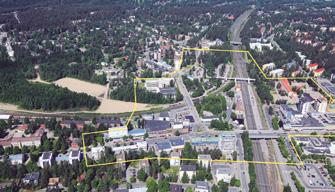Carsid sur la Sàmbre
CHARLEROI (BE) — SPECIAL MENTION
AUTHOR(S) — Vania Collazo (ES), Víctor Romero (ES), Architects
CONTACT — 4 Zaragoza St., 36203 Vigo (ES)
CONTRIBUTOR(S) — Juan Barón (ES), Student in architecture
+34 617661629 rocoarchitects@gmail.com / www.rocoarchitects.com
TEAM POINT OF VIEW — “Carsid sur la Sàmbre” is a landscape
proposal of connection and re-use that aims at turning a damaged zone into a new entertaining, didactic and relaxing unit within Charleroi. The project connects citizens through a shared space in the middle of the surrounding neighbourhoods. The past history of the place is not destroyed; instead, the project repurposes it into a self-fixing space. In so, a former industrial spot in a privileged position is turned into a common area that does not break up with the industrial remains, but actually improves them. The project is a tapestry that uses the remains of the existing train trails and takes the existing structures into consideration. With this, the pattern organises communication without forcing and unifies the whole intervention area.
76
Matière savante
CHARLEROI (BE) — SPECIAL MENTION
AUTHOR(S) — Leandro Ferreira Soares (FR),
CONTACT — parages
Bertrand Etienne Le Personnic (FR), Yannis Fremont
8 rue Jean Pierre Timbaud, 75011 Paris (FR)
Marinopoulos (FR), Hugo Maffre (FR), Architects
+33 650139912 / www.parages-architectes.eu
TEAM POINT OF VIEW — How to regenerate the industrial past that
is now our heritage? How to find attractiveness on a site without distorting it? How to find a resilient economy? “Matière savante” proposes an iterative process of transformation and remobilization of the industrial heritage and local context through an inventory. A catalogue of four elements: landscape; structure; fluids; and human knowledge. It is about transforming the existing materials through deconstruction and re-use. Instead of freezing intentions, “Matière savante” proposes a method that cannot exist without the local human needs and knowledge. It is rather an iterative contextual method, applicable to other industrial sites with the same issues of enclave and abandonment. A productive process which reveals the historical and knowledgeable material of these sites.









































































